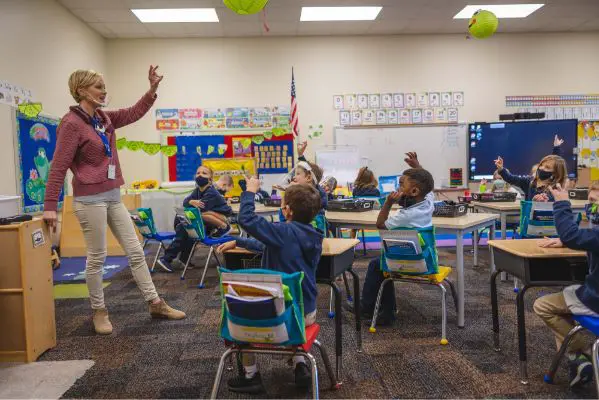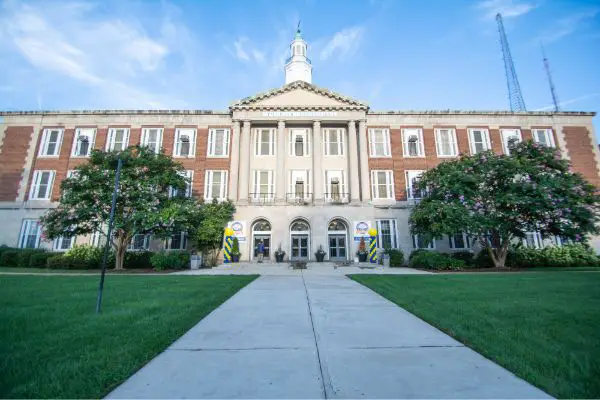Imagine having more choices when it comes to your child’s education. Charter schools promise just that. These schools offer different ways of teaching and learning, giving parents more options. But, as with anything, there are two sides to this story. The debate around charter schools boils down to one key fact: they have more freedom than regular public schools. This freedom allows them to be innovative, but it also raises concerns about accountability. In this blog post, we will explore the pros and cons of charter schools, looking at how this freedom impacts education, parents, and students. So, let’s start with us to find out the benefits and drawbacks of charter schools.
| If you have a toddler, you can choose a daycare for your child before choosing the one, you should check whether daycares are open on weekends. Furthermore, you may have options like Goddard, Primrose, Learning Experience, or Bright Horizon. |
Pros of Charter Schools
Here are the pros of charter schools with explanations for each heading:
- Educational Innovation: Charter schools are known for their flexibility in designing curricula and teaching methods. This innovation allows them to cater to diverse learning needs and experiment with creative educational approaches. For example, a charter school might focus on project-based learning, arts integration, or STEM education, providing students with unique opportunities for academic exploration.
- School Choice: Charter schools expand the options available to parents. Families can choose a school that aligns with their children’s specific needs and interests, fostering a sense of ownership and involvement in their child’s education. This choice can be especially valuable when traditional public schools in a district do not meet a student’s educational requirements.
- Accountability: Charter schools are typically held accountable through performance-based contracts. This accountability encourages continuous improvement and ensures that the school is meeting its stated goals. Inefficiencies or poor academic outcomes can lead to the revocation of the school’s charter, providing a mechanism for quality control.
- Autonomy: Charter schools have more independence and flexibility in decision-making than traditional public schools. This autonomy allows them to adapt to the evolving needs of their student population without the bureaucratic hurdles often associated with public school systems.
- Parental Involvement: Charter schools often encourage active parental involvement. With parents having the choice to select the school, they are more likely to be engaged in their child’s education, contributing to a strong sense of community and support.
- Specialized Programs: Many charter schools specialize in specific areas, such as the arts, language immersion, or vocational training. This specialization can give students access to unique educational opportunities that may not be available in traditional public schools.
- Smaller Class Sizes: Some charter schools maintain smaller classes, allowing for more personalized attention and tailored instruction. This can be particularly beneficial for students who require more individualized support or thrive in smaller learning environments.
- Community Engagement: Charter schools often foster a stronger connection between the school and the local community. This can lead to collaborative efforts, community support, and a more responsive educational environment that addresses the specific needs of the community.
Cons of Charter Schools

Here are the cons of charter schools with explanations for each heading:
- Lack of Accountability: Charter schools, despite having autonomy, may sometimes be held to a different level of accountability than traditional public schools. Some argue that this lack of oversight can lead to mismanagement, financial irregularities, and lower educational standards. In some cases, charter schools may need to meet the academic and operational expectations set in their charter contracts.
- Inequality: Charter schools have been criticized for contributing to educational inequality. Critics argue that charter schools, with their open enrollment policies or lotteries, may serve only some students equally. They can sometimes exclude or disadvantage students with disabilities, English language learners, or those from disadvantaged backgrounds. This can lead to concerns about a two-tiered education system.
- Resource Allocation: Charter schools can divert funding and resources from traditional public schools. This can create financial challenges for public schools, potentially leading to overcrowded classrooms, reduced extracurricular programs, and teacher layoffs. The competitive nature of charter schools can exacerbate these resource allocation issues.
- Teacher Working Conditions: Charter school teachers may experience differences in working conditions compared to their counterparts in traditional public schools. While some charter schools offer competitive salaries and benefits, others may provide different job security or retirement options. The variance in working conditions can affect teacher morale and retention.
- Standardized Testing Emphasis: Some charter schools are criticized for placing a heavy emphasis on standardized testing to measure student and school performance. This can lead to a narrowed curriculum focused on test preparation, potentially limiting the breadth of educational experiences for students.
- Access and Admissions Issues: Charter schools may be accused of selective admissions practices or not providing equitable access to all students in the community. Some charter schools may require additional applications or parental involvement, creating barriers for certain student populations.
- Socioeconomic Disparities: The impact of charter schools on socioeconomic disparities is a subject of debate. Some argue that charter schools can exacerbate these disparities by attracting more motivated and involved parents, leaving behind those who need more resources or information to navigate the charter school application process.
- Community Disruption: Establishing charter schools can lead to community divisions and tensions. When charter schools compete with traditional public schools for students and resources, it can create conflicts within communities and challenge the sense of cohesion and shared resources.
What Is The Difference Between A Charter School And A Public School In Florida?

Charter schools and traditional public schools have several key differences. Here’s an overview of the distinctions:
Governance
- Charter Schools: Charter schools are publicly funded but operate independently. They are often managed by a non-profit organization or a charter management organization (CMO). They have more autonomy in decision-making and are held accountable for their performance through a charter contract with a specific authorizing entity (such as a school district or state education department).
- Public Schools: Traditional public schools are directly managed and funded by local or state government education authorities. They have less autonomy and are subject to more direct government oversight.
Funding
- Charter Schools: Charter schools receive public funding, but they may also seek additional funding through grants and private donations. They often have more control over their budgets.
- Public Schools: Traditional public schools rely primarily on government funding, and local or state authorities determine their budgets.
Admissions
- Charter Schools: Charter schools often have open enrollment policies, but they may use lotteries if they receive more applications than available seats. Some charter schools focus on specific educational models or themes.
- Public Schools: Traditional public schools typically enroll students based on their residential address, leading to neighborhood-based enrollment.
Curriculum and Teaching Methods
- Charter Schools: Charter schools have the flexibility to implement innovative teaching methods and curricula. They can tailor their educational approach to their mission or focus, including project-based learning, arts integration, or other specialized models.
- Public Schools: Traditional public schools often follow a standardized curriculum determined by the state or school district. There needs to be more flexibility in terms of teaching methods and curriculum.
Accountability
- Charter Schools: Charter schools are accountable for their performance through charter contracts. If they meet established academic or operational standards, they may be open or have their charters revoked.
- Public Schools: Traditional public schools are subject to state and federal regulations and accountability measures, but the consequences for poor performance may be different from those faced by charter schools.
Unionization
- Charter Schools: Charter school staff may or may not be part of teachers’ unions, depending on the school’s policies and location.
- Public Schools: Traditional public schools are likelier to have unionized teachers and staff.
FAQs
Are charter school teachers certified in Texas?
In Texas, charter school teachers are only sometimes required to be certified. Texas law allows charter schools to hire non-certified teachers for certain positions, provided they meet specific qualifications.
How many charter schools are there in the United States?
There are 7,800 charter schools in the United States.
Are charter schools free in Texas?
Yes, charter schools in Texas are generally tuition-free, just like traditional public schools. They are publicly funded and do not charge tuition to students.
How are charter schools paid for in Texas?
Charter schools in Texas are publicly funded and receive their funding primarily through state and local sources, similar to traditional public schools. The funding is based on the average daily attendance (ADA) of students, where the state allocates a certain amount of funding per student. This funding model ensures that charter schools have the resources to operate and educate the students they serve.
